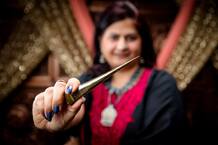What is Henna? |
Henna is a flowering plant used since antiquity to dye skin, hair, fingernails, leather and wool. The name is also used for dye preparations derived from the plant, and for the art of temporary tattooing based on those dyes. Natural henna only stains reddish brown or dark brown not black.
We use only 100% natural henna and other natural ingredients like lemon juice, fructose, molasses, brewed tea, coffee, cinnamon, cloves, essential oils like cajeput, lavender and eucalyptus to make the henna paste. |
The Process
Whole, unbroken henna leaves will not stain the skin. Henna will not stain skin until the lawsone molecules are made available (released) from the henna leaf. Fresh henna leaves will stain the skin if they are smashed with a mildly acidic liquid (lemon juice). The lawsone will gradually migrate from the henna paste into the outer layer of the skin and bind to the proteins in it, creating a stain.
Since it is difficult to form intricate patterns from coarse crushed leaves, henna is commonly traded as a powder made by drying, milling and sifting the leaves. Artists get it in the powder form.
Since it is difficult to form intricate patterns from coarse crushed leaves, henna is commonly traded as a powder made by drying, milling and sifting the leaves. Artists get it in the powder form.
The Paste
To make henna paste, henna powder is mixed with lemon juice, water, strong tea, essential oils and fructose and then left to dye release. Which can take between 4 to 8 hours. Essential oils with high levels of monoterpene alcohols such as tea tree, eucalyptus, cajeput or lavender will help it to release dye.
The Henna Cone

Henna paste can be applied with many traditional and innovative tools, including resist, a cone, syringe, Jac bottle or fingers. A light stain may be achieved within minutes, the longer the paste is left on the skin, the stronger the stain will be, and should be left for several hours. To prevent it from drying or falling off the skin, the paste is often sealed down by dabbing or spraying sugar/lemon mix over the dried paste, or simply adding some form of sugar to the paste. It is debatable whether this adds to the color of the end result; some believe it increases the intensity of the shade. After 4 to 8 hours the dried paste is simply brushed or scraped away.
Web Hosting by iPage
